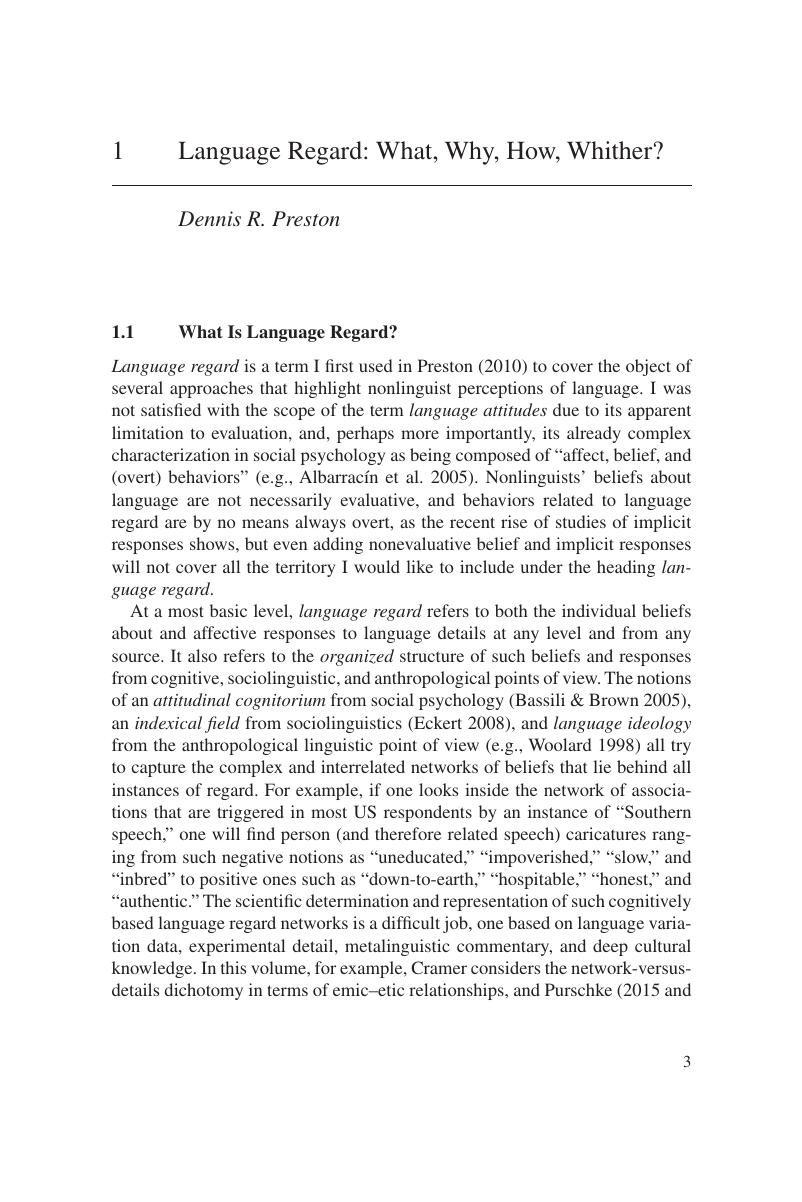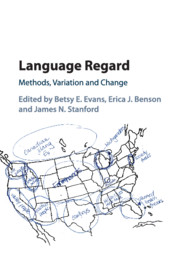Book contents
- Language Regard
- Language Regard
- Copyright page
- Dedication
- Contents
- Figures
- Tables
- Notes on Contributors
- Preface
- Acknowledgments
- Introduction
- 1 Language Regard: What, Why, How, Whither?
- Part I Language Regard: Varied Methods
- Part II Language Regard and Language Variation
- Part III Language Regard and Language Change
- Index
- References
1 - Language Regard: What, Why, How, Whither?
from Introduction
Published online by Cambridge University Press: 12 January 2018
- Language Regard
- Language Regard
- Copyright page
- Dedication
- Contents
- Figures
- Tables
- Notes on Contributors
- Preface
- Acknowledgments
- Introduction
- 1 Language Regard: What, Why, How, Whither?
- Part I Language Regard: Varied Methods
- Part II Language Regard and Language Variation
- Part III Language Regard and Language Change
- Index
- References
Summary

- Type
- Chapter
- Information
- Language RegardMethods, Variation and Change, pp. 3 - 28Publisher: Cambridge University PressPrint publication year: 2018
References
- 10
- Cited by

